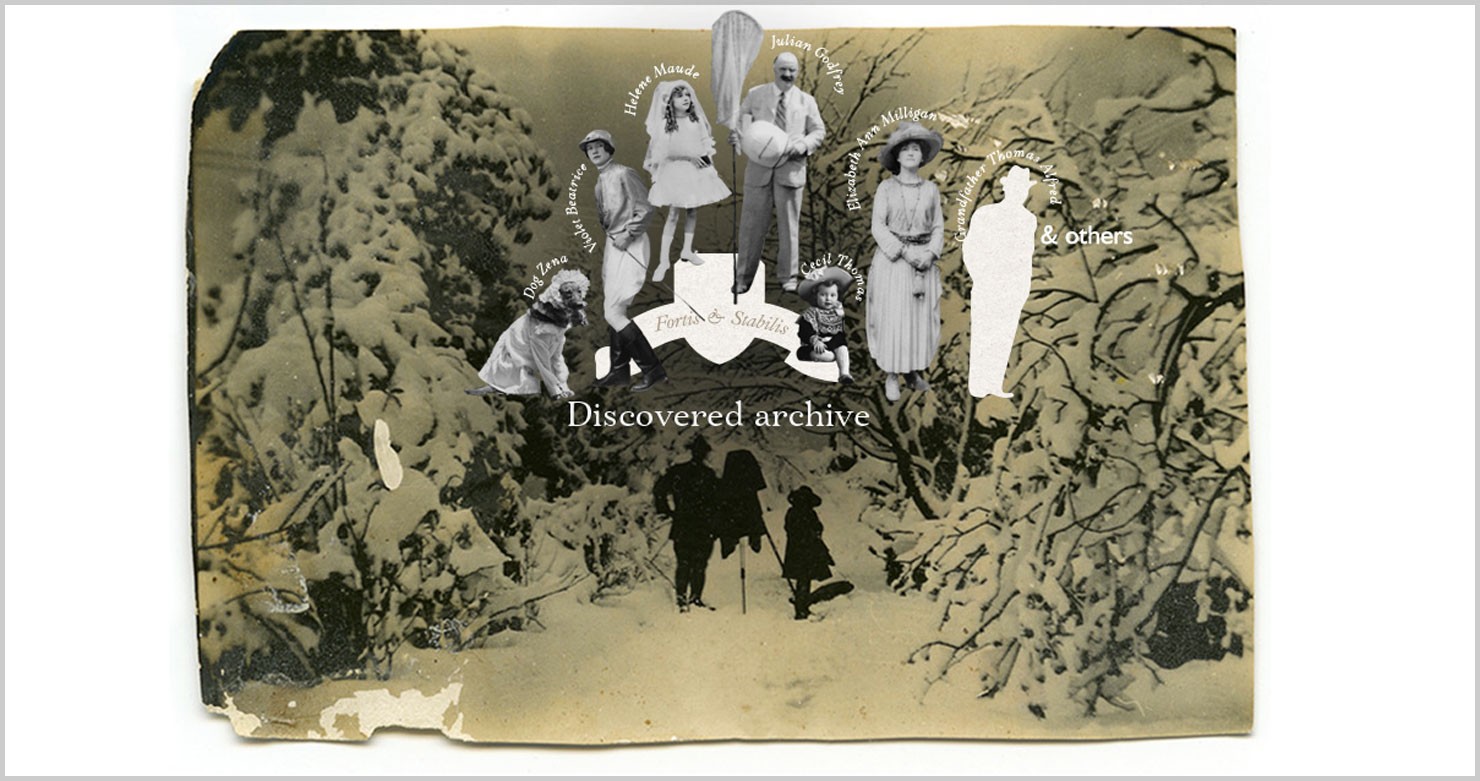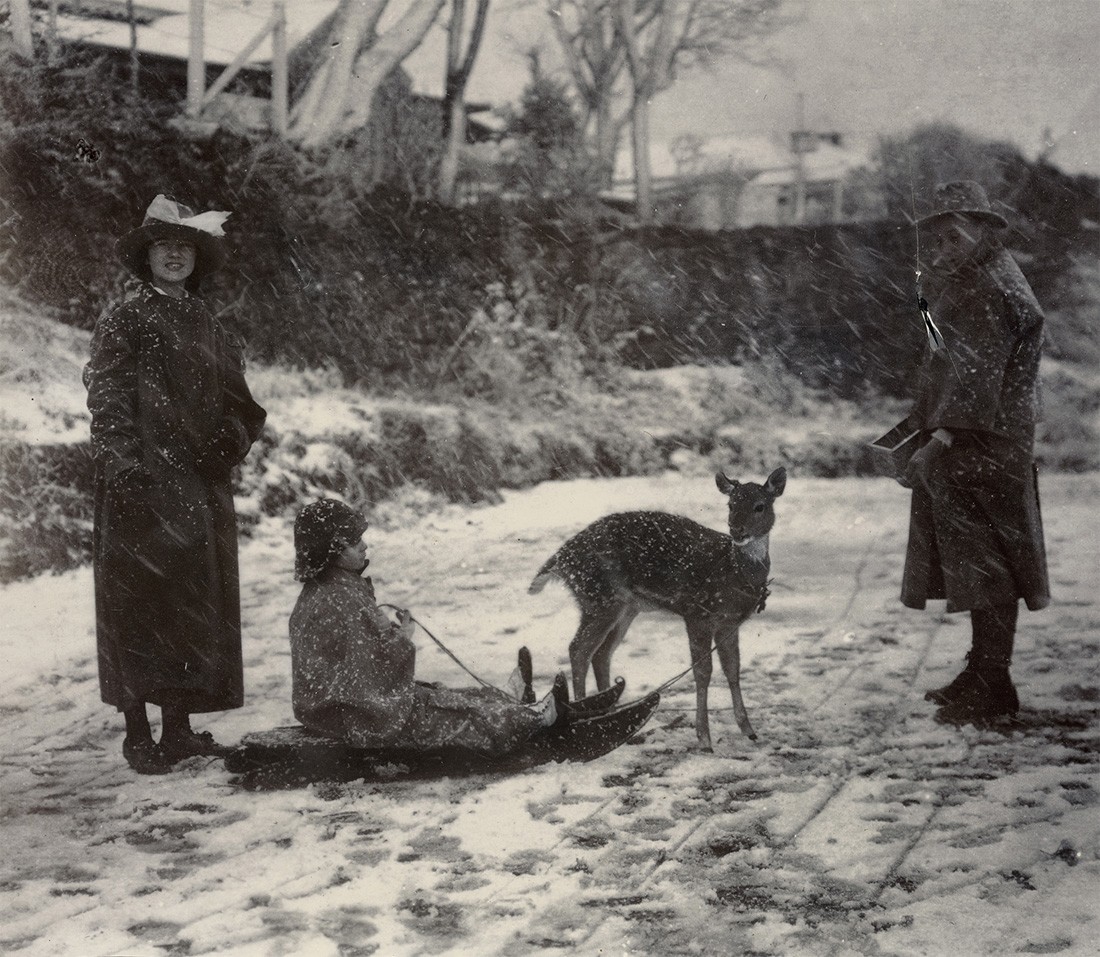
“Please return”: The History of a Family of English Aristocrats through Photos Found in Sri Lanka
Moscow photographer Anastasiya Markelova and her husband visited an antique shop during their travels around Sri Lanka a few years ago. They found an inconspicuous shoebox there where a few hundred black-and-white photos, the chronicles of some kind of rich, European family, were gathering dust.
Anastasiya told Bird in Flight how she found out who these people in the photos were, how she met their relatives and servants and what she felt upon finding the grave of Helen, the woman who represented the last generation of the family.
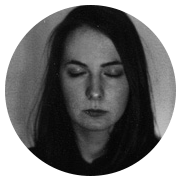
In 2013, my husband and I went to Sri Lanka on holiday and we accidentally walked into an antique shop in the city of Kandy. Sasha saw a shoebox through the window which was filled with old photos, eccentric and ridiculous pictures: a dressed-up dog, a small, dancing ballerina and family vacation pictures. I got about 300 photos from the whole box. I remember how, on the way back sitting in a tuk-tuk, I was clutching the package of photos to my chest and it seemed like I had my hands on a treasure trove.
Studying the archive in Moscow, I came to the conclusion that the pictures depicted a British aristocratic family from the end of the 19th century to the beginning and middle of the 20th century. The shots covered a period of about 50-60 years. The characters’ greatest passion was traveling; they went around the world by car and on ships. There’s one photo where they are climbing up Kilimanjaro and servants are carrying their stuff behind them.
{“img”: “/wp-content/uploads/2015/10/pleasereturn_01.jpg”, “text”:”Photographer Julian Rust with his daughter, Helene. Beginning of the 1920s.”}
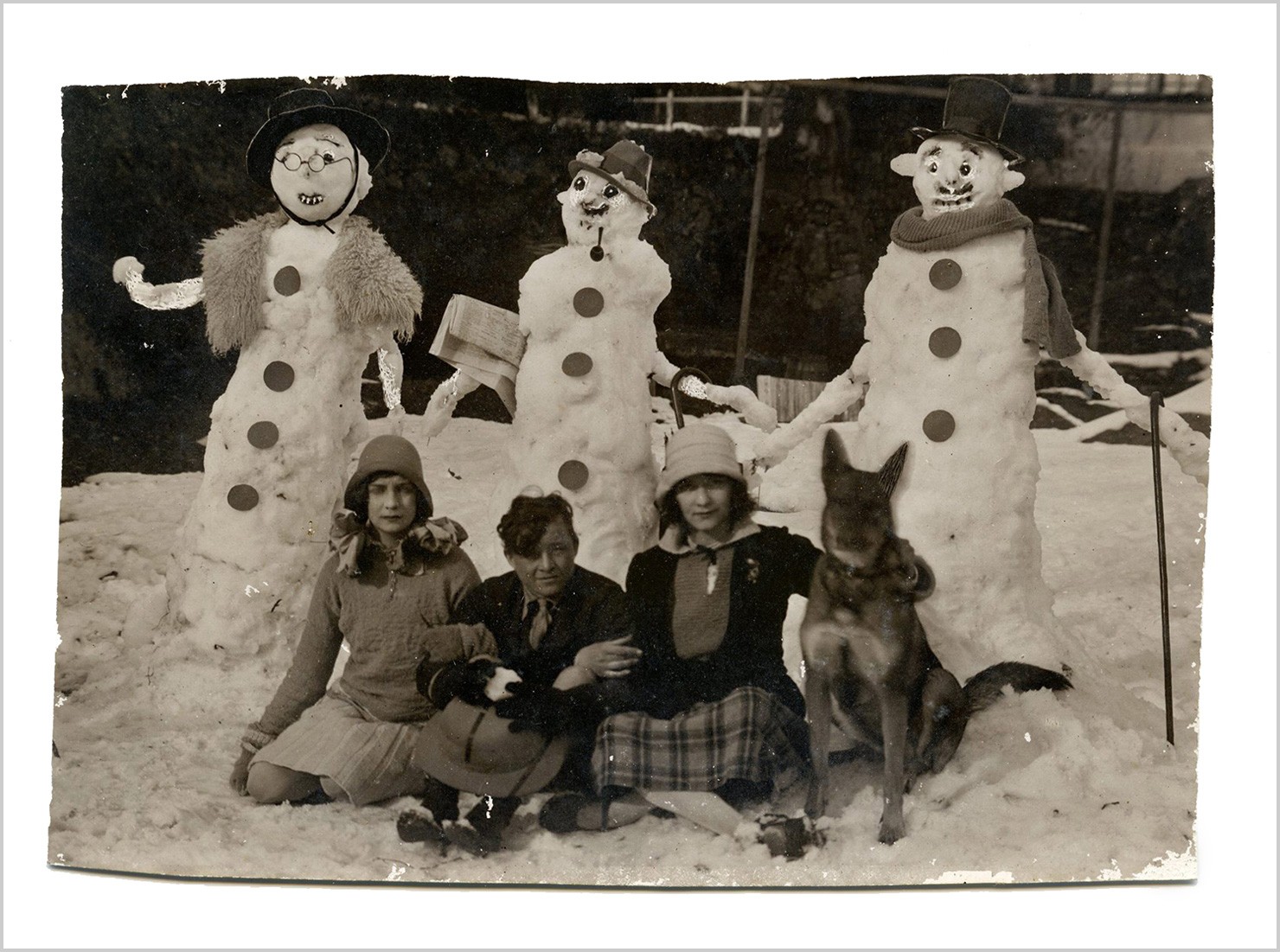
Group portrait with all members of the family. Left-right: Helene Rust (youngest child), a family friend, Violet (middle child), their dog Zena. Snowmen: Elizabeth Rust (mother), Julian Rust (father), Cecil Rust (oldest child). Beginning of the 1930s.
{“img”: “/wp-content/uploads/2015/10/pleasereturn_03.jpg”, “text”:”Helen Rust. Note on opposite side: Helene in her first H.C. Frock. Middle of the 1920s.”}
{“img”: “/wp-content/uploads/2015/10/pleasereturn_04.jpg”, “text”:”Sisters Helene and Violet with their friends in a pool. Middle of the 1920s.”}
{“img”: “/wp-content/uploads/2015/10/pleasereturn_05.jpg”, “text”:”Helene in a garden near their house. Note on opposite side: Our beautiful road garden path. Summer. Beginning of the 1920s.”}
I set off for St. Petersburg in order to figure out my findings, where the university photography department was hosting a workshop with Andrea Stultiens, a photo archive professional. Together, we deciphered many of the opposite-side notes. I found out the names of the family members and in which places they had been, but couldn’t find out their surname.
After some time my friend traveled to Sri Lanka, and I asked her to search for that antique shop so I could obtain other photos from their collection and ask the shopkeeper about their archive. The shopkeeper said that those photos belonged to the Rust family. The family owned a vast amount of property on different continents, cargo ships, and rubber, tea and cardamom plantations on Sri Lanka. The children – Helene (the youngest), Violet and Cecil – were surrounded by people of high social rank from birth. For example, their father Julian became friends with one Indian prince who, every time he invited them to visit him, sent a private train for the Rusts which would deliver them right to his residence. There’s one photo where Edward, Prince of Wales and future King Edward VIII, is accepting a bouquet of flowers from Helene.
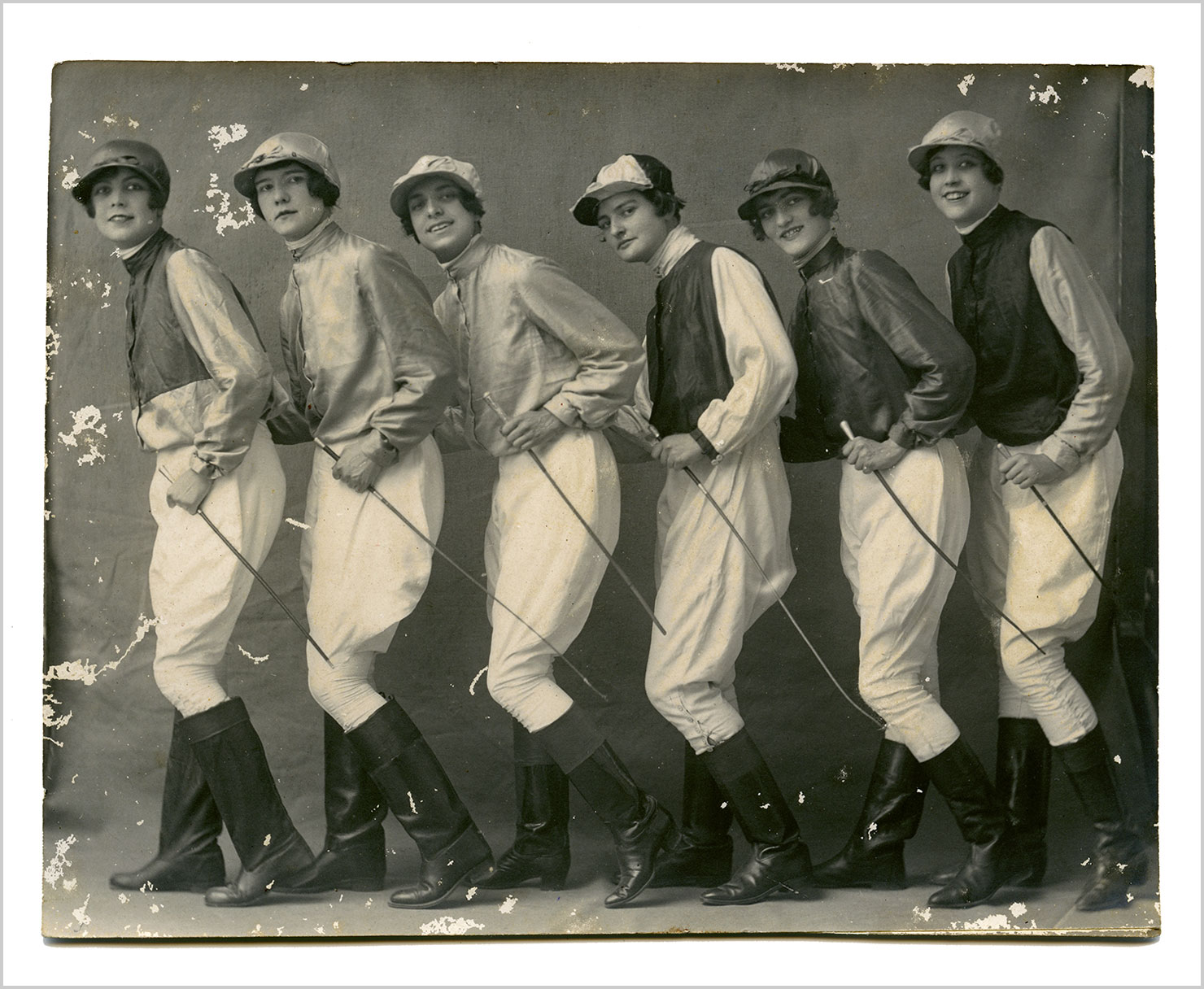
Group portrait. Violet Rust is second from the left. Beginning of the 1930s.
{“img”: “/wp-content/uploads/2015/10/pleasereturn_07.jpg”, “text”:”At the zoo in Bombay, India. Beginning of the 1920s.”}
{“img”: “/wp-content/uploads/2015/10/pleasereturn_09.jpg”, “text”:”The countryside in Mussoorie, India. The Rust family lived there during the period of colonization.”}
{“img”: “/wp-content/uploads/2015/10/pleasereturn_10.jpg”, “text”:”A butterfly hunt. Left-to-right: Elizabeth Rust (mother), a family friend, Helene Rust (youngest child), a family friend, Julian Rust (father) with a net. End of the 1930s.”}
I tried to find the Rusts’ descendants. I stumbled upon one Frances Forrest on the genealogy site Ancestry.com, who was looking for information about her ancestors, the Rusts. I wrote to her and sent some photos. It turned out that she had already been trying to get info on that side of the family for 30 years, but until that moment she hadn’t seen one photo. It was a real shock for her. She sent me a link to an article in the Sri Lankan The Sunday Times, in which Helene Rust, her third-aunt, talked about her life.
Now knowing the full names of Helene’s father and grandfather, I figured out that they had been professional photographers, and there’s the answer why the photos were done so skillfully.
By that time Helene’s grandfather owned two photo studios in London and soon after moving to India, he opened five more. His name appears next to that of the famous photographer of the era, Julie Margaret Cameron, in articles in the LA Times and in the archives of the University of Texas. In total, the father-son duo of Thomas and Julian Rust were dedicated to photography for 80 years.
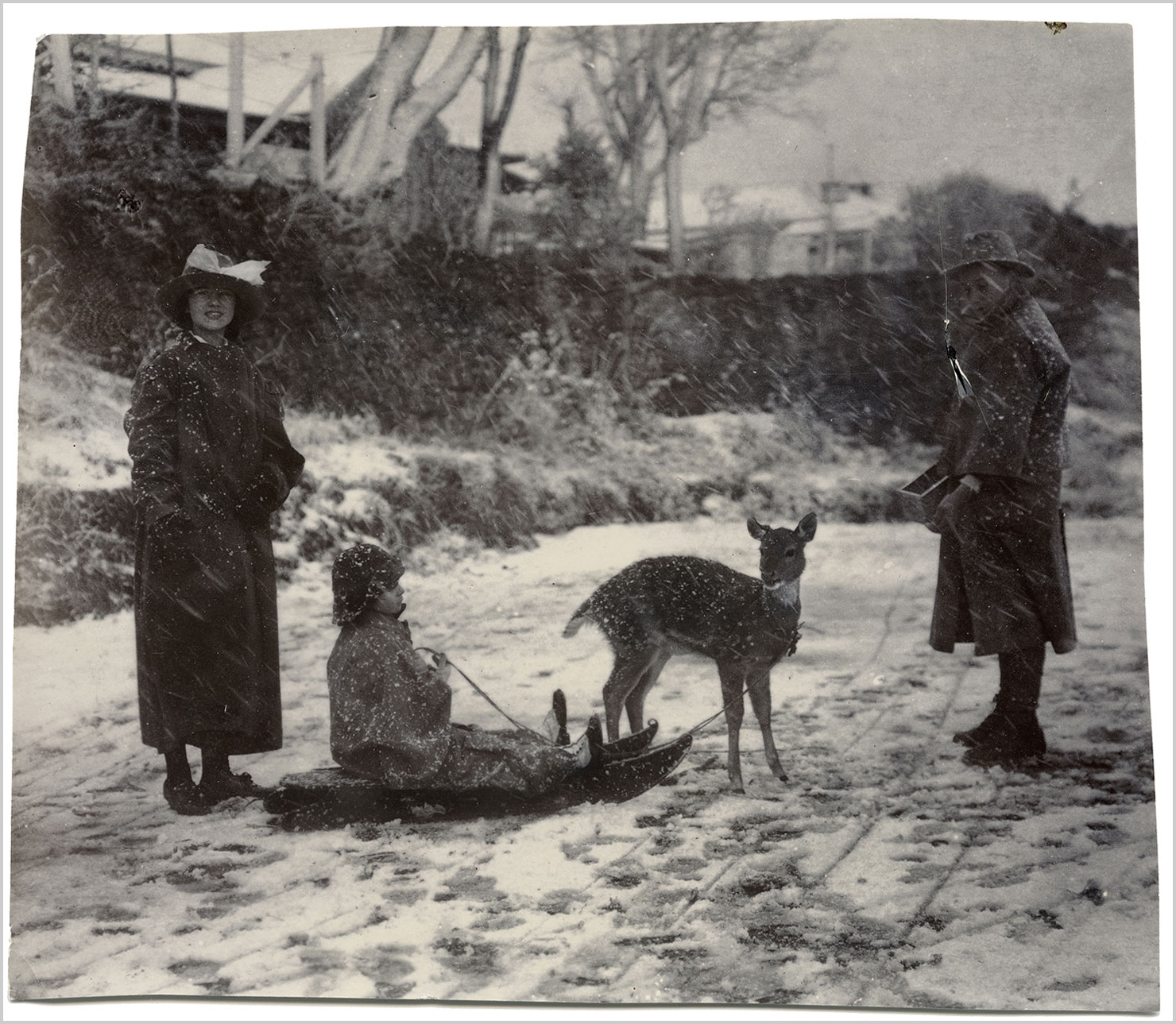
The family with a doe. Beginning of the 20th century.
{“img”: “/wp-content/uploads/2015/10/pleasereturn_11.jpg”, “text”:”Sisters Helene and Violet with friends. Mussoorie, India. Middle of the 1920s.”}
{“img”: “/wp-content/uploads/2015/10/pleasereturn_12.jpg”, “text”:”A tea party. Elizabeth Rust with daughters Helene and Violet at a friend’s place. England. Note on opposite side: Monte Buny + us at tea at a Thatched Cottage. Lindhurst. 1930s.”}
{“img”: “/wp-content/uploads/2015/10/pleasereturn_13.jpg”, “text”:”Helene Rust. This scar stayed on her neck after a car accident. The photo was printed as a postcard. Note on the opposite side reads: Postcard. There is space for a stamp and words. Beginning of the 1930s.”}
Having returned from Paris Photo in November 2014, I was looking through the exhibition’s online gallery and found out that an Indian photography group, The Alkazi Foundation, had presented photos of a Nepalese princess at the exposition – photos taken by Julian Rust. Then it turned out that photos of the Rusts were being sold at a Christie’s & Bonhams auction and others were being kept in the collections of Columbia University (New York), the British Library and the Australian National Gallery.
I even found out later that Julian Rust took pictures of Indira Gandhi when she was 16 years old. This was mentioned in a note I found from her father, Jawaharlal Nehru, in which he wrote that Rust, “a good photographer,” will be coming to take her picture.
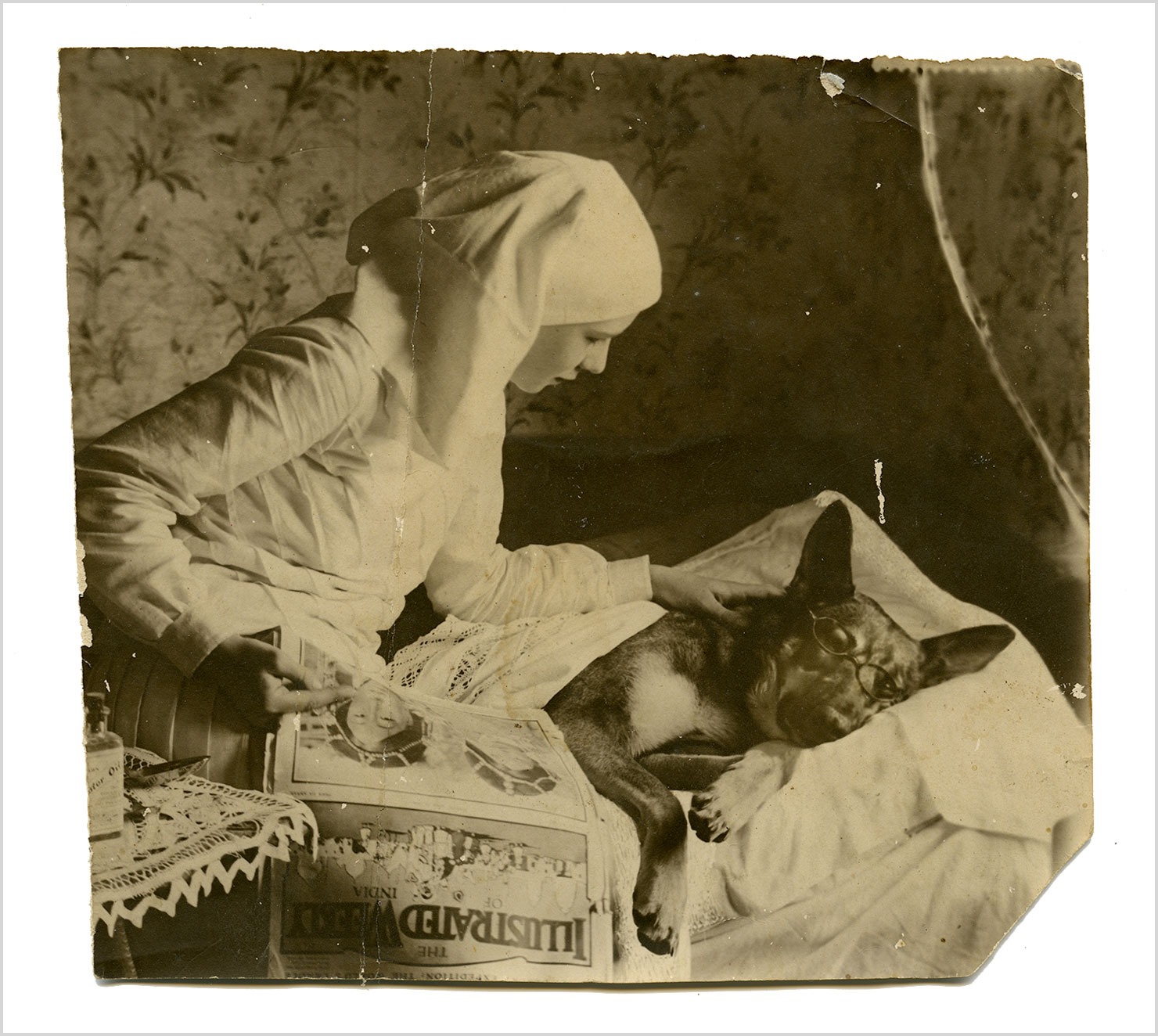
Helene Rust poses with her dog, Zena.
{“img”: “/wp-content/uploads/2015/10/pleasereturn_15.jpg”, “text”:”Helene Rust and her dog, Zena. Note on opposite side: Your painty-room a difficult subject as it faces the light it’s now Helen’s bedroom in A-House new pink. Zena thought…heard a cat so moved. 1930s.”}
{“img”: “/wp-content/uploads/2015/10/pleasereturn_16.jpg”, “text”:”Helene and Zena dancing. Older sister Violet poses in the background. 1920s.”}
{“img”: “/wp-content/uploads/2015/10/pleasereturn_17.jpg”, “text”:”Horse and carriage. Photo without note.”}
My husband and I set off for a family trip around Sri Lanka in March 2015. This trip coincided with the 11th anniversary of Helene’s death. It was important for me to find her grave so that I could tell her myself why I’m digging up her family history. I also intended to visit the same antique shop to buy the remaining photos of the Rusts and check out four houses that belonged to the family.
I found even more photos which, it seemed, were a million times cooler than those I had bought at the beginning. We were also able to get a few things that were possessions of the Rust family.
{“img”: “/wp-content/uploads/2015/10/pleasereturn_18.jpg”, “text”:”Violet Rust poses with a friend.”}
{“img”: “/wp-content/uploads/2015/10/pleasereturn_19.jpg”, “text”:”Helene Rust. A collage made by her, herself.”}
{“img”: “/wp-content/uploads/2015/10/pleasereturn_20.jpg”, “text”:”In the photo: Violet and Julian Rust. London, England. End of the 1930s. Note on opposite side: Bird Cage walk St. James Park where Sullivan V.C. (Australian) slipped & died. He came for the coronation.”}
{“img”: “/wp-content/uploads/2015/10/pleasereturn_22.jpg”, “text”:”Opposite side of a photo with the note: Please return.”}
The owner of the shop ceased asking us about our future plan of action and offered to introduce us to Helene’s servant who was living in the house that she gave him. It was a gift of fate: to be able to speak personally with a person who knew her well – he started serving Helene when he was 10 and buried her 50 years later. He is now 71 years old.
Suddenly, I felt empty inside and I realized that the history of this family had finished forever. In this way I found the answer to my second question: the archive ended up in an old man’s shop because the Rust family kin was cut short. (Cecil passed away in London in 1960 after a long illness. In 1974, 14 years later, Violet died. Helene was the last of the Rusts from this generation. None of them had any legal descendants.)
{“img”: “/wp-content/uploads/2015/10/pleasereturn_23.jpg”, “text”:”Photos from an album acquired from Helene’s servant. The album is dedicated to Helene’s true passion: dancing. Other family members are also present in the album. Beginning of the 20th century – 1960s.”}
{“img”: “/wp-content/uploads/2015/10/pleasereturn_24.jpg”, “text”:”Photos from an album acquired from Helene’s servant. The album is dedicated to Helene’s true passion: dancing. Other family members are also present in the album. Beginning of the 20th century – 1960s.”}
{“img”: “/wp-content/uploads/2015/10/pleasereturn_25.jpg”, “text”:”Photos from an album acquired from Helene’s servant. The album is dedicated to Helene’s true passion: dancing. Other family members are also present in the album. Beginning of the 20th century – 1960s.”}
{“img”: “/wp-content/uploads/2015/10/pleasereturn_35.jpg”, “text”:”Photos from an album acquired from Helene’s servant. The album is dedicated to Helene’s true passion: dancing. Other family members are also present in the album. Beginning of the 20th century – 1960s.”}
In 2015, when I arrived at ISSP (an international photography summer school in Latvia), teachers of an album course that I was taking were asking me what the heck I was planning to do with the archive. I repeated several times that, for me, this story is a fairy tale that has two main characters: Helene and me, marching forward in my research, finding little secrets that turn out to be the real treasure.
During the 10 days I spent at the school I made a “dummy” – a draft of the first part of my future book in A3 size, allowing for a detailed view of the photos. I made the theme as close to a children’s fairy tale as I possibly could. In it, there is a story about Helene, but I’m doing work on the second part – my travels with the archive – with my designer friend at the moment.
{“img”: “/wp-content/uploads/2015/10/pleasereturn_21.jpg”, “text”:”A dummy of the book, made at ISSP in Latvia.”}
{“img”: “/wp-content/uploads/2015/10/pleasereturn_26.jpg”, “text”:”A dummy of the book, made at ISSP in Latvia.”}
{“img”: “/wp-content/uploads/2015/10/pleasereturn_27.jpg”, “text”:”A dummy of the book, made at ISSP in Latvia.”}
{“img”: “/wp-content/uploads/2015/10/pleasereturn_28.jpg”, “text”:”A dummy of the book, made at ISSP in Latvia.”}
{“img”: “/wp-content/uploads/2015/10/pleasereturn_29.jpg”, “text”:”Work on the book at ISSP. Latvia.”}
I wrote a story about Helene and her dog Zena where fiction is intertwined with real facts from the family biography. The girl and her trusty friend run around different continents while bad guys who want to kidnap Helene’s magical dog chase them. My task is to continue this family’s story. I imagine what was important to them and convey my own impression of the two years of my life I gave to this story.
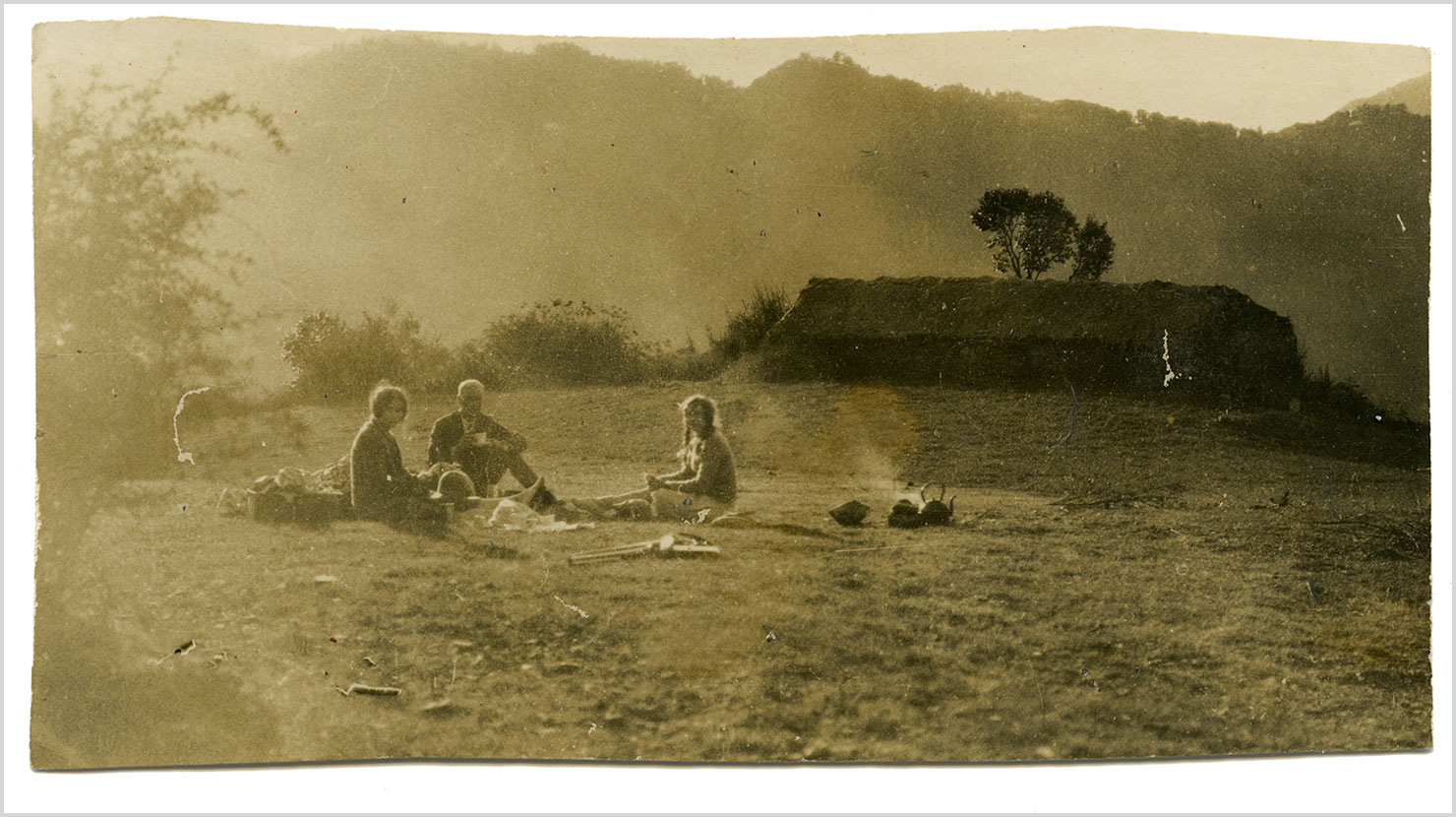
The Rust family having a walk. Mussoorie, India. Beginning of the 1920s.
{“img”: “/wp-content/uploads/2015/10/pleasereturn_31.jpg”, “text”:”The Rust family having a walk. Mussoorie, India. Beginning of the 1920s.”}
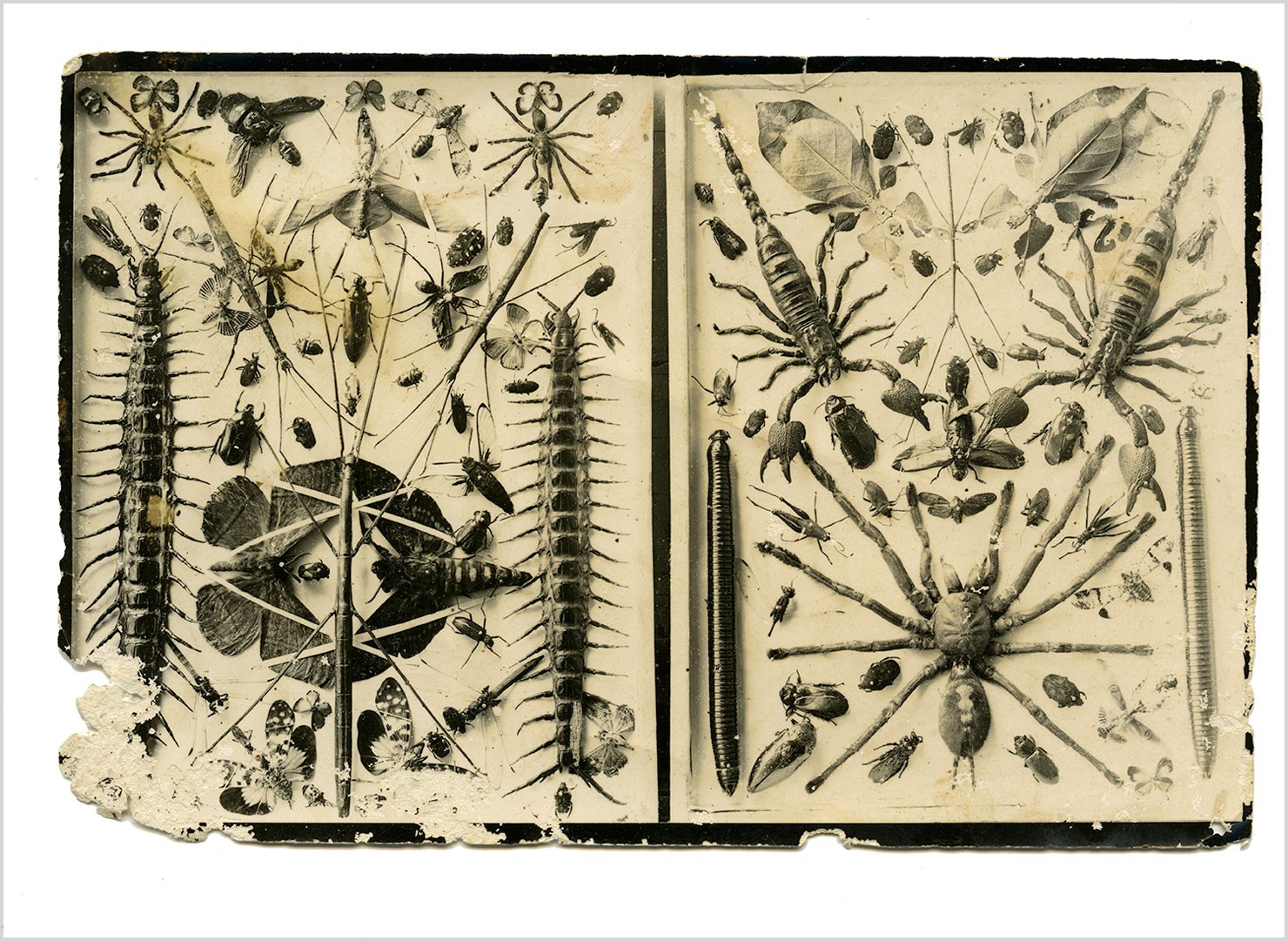
A collection of insects.
{“img”: “/wp-content/uploads/2015/10/pleasereturn_33.jpg”, “text”:”Note on opposite side: Daddy’s Fighting Cocks.”}
{“img”: “/wp-content/uploads/2015/10/pleasereturn_34.jpg”, “text”:”Note on opposite side: And this is one from Town showing the Snow”}
{“img”: “/wp-content/uploads/2015/10/pleasereturn_36.jpg”, “text”:”Helene as a Hawaiian dancer.”}
You can get better acquainted with the Rust family at this site, made by me for this project. There are photos and stories about each one, even one for Zena the dog who appears as a rightful member of the family.
I asked myself once: why did I do all this?
I have photos where she is still a baby and ones at her funeral – I can practically trace her whole life. It’s important for me to maintain her family’s memory. I experience many events from my own life through the lens of a camera. Sometimes it helps me to distance myself, other times it’s the opposite – experiencing things as they are. Maybe this filter I use to capture events is my own form of therapy.
